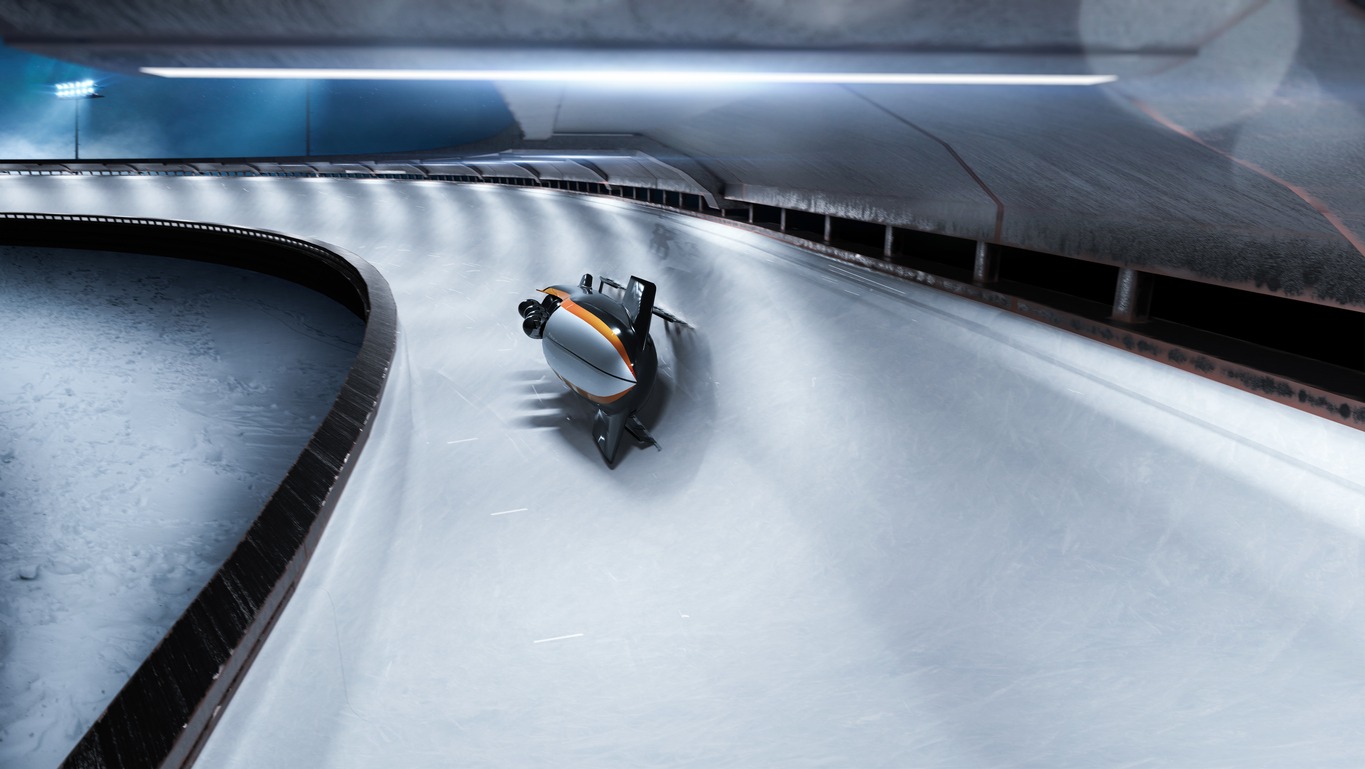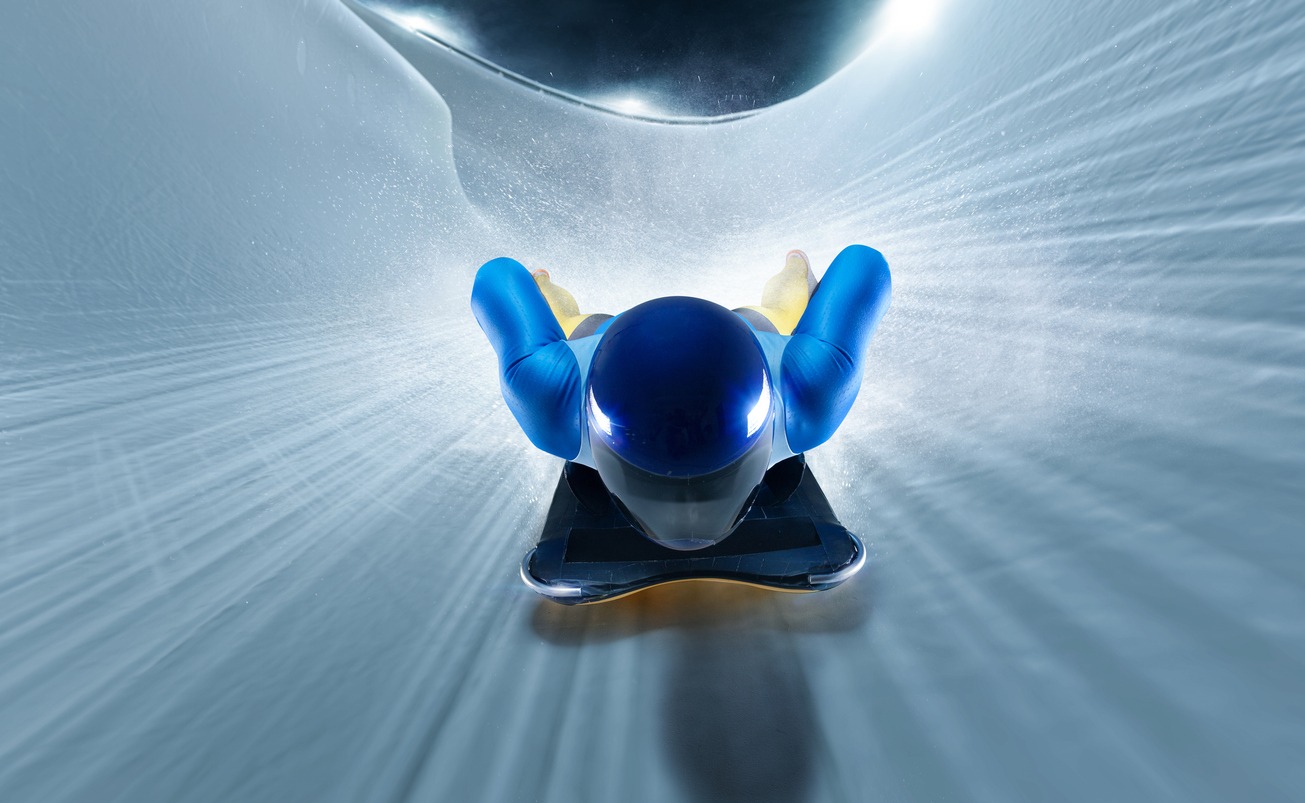Luge is a high-speed winter sport where athletes slide down a track on a small sled, known as a luge, reaching speeds of up to 90 miles per hour (145 kilometers per hour) or more. Originating in the late 19th century in the Swiss Alps, luge has become a popular Olympic sport, with athletes from over 30 countries participating in competitions worldwide.
The sport has seen significant advancements in technology, with sleds now made from lightweight materials such as fiberglass and equipped with aerodynamic features to maximize speed and control. Safety measures have also improved, including the use of protective gear such as helmets and specialized tracks designed to minimize risks and ensure the athletes’ well-being.
Today, luge remains an exhilarating and challenging sport. Luge tracks continuously improve design, safety, maintenance, and training, enhancing the athlete’s experience and captivating global audiences.
Types of Luge Track
A luge track is a carefully designed course that offers an exhilarating experience to luge athletes. It comprises straight sections, curves, twists, turns, and varying gradients, all of which test the athletes’ skills and inject excitement into their runs. Tracks typically is made up of artificial and natural tracks which contribute to the diverse landscape of luge racing.
Artificial tracks are purpose-built luge tracks that feature specifically designed and constructed banked curves and walled-in straights. These tracks are predominantly equipped with artificial refrigeration systems to maintain optimal ice conditions. However, it’s worth noting that there are some artificial tracks, such as the one in St. Moritz, Switzerland, that do not rely on artificial cooling. Artificial Track Luge has been an official Olympic discipline since 1964, highlighting the significance and recognition of these tracks within the sport. Below is a list of various artificial luge tracks, some with artificial refrigeration and some without, that provide thrilling experiences for athletes and spectators alike.
Natural tracks, in contrast to artificial tracks, are adapted from existing mountain roads and paths. These tracks do not permit artificially banked curves; instead, the curves must follow the natural terrain. The surface of natural tracks must be horizontally aligned without artificial modifications. Unlike artificial tracks, natural tracks rely solely on natural ice formation and do not have artificial refrigeration systems. These tracks utilize the freezing temperatures and climate conditions of their locations to create suitable surfaces for luge racing. Natural tracks have their own unique challenges and characteristics, offering a different experience compared to their artificial counterparts. While artificial tracks have gained popularity due to their controlled conditions, natural tracks maintain their historical significance and continue to attract luge enthusiasts who appreciate the raw, untouched nature of the sport.The track surface is typically made of either ice or packed snow, providing a fast and smooth path for the sleds to glide on. Maintaining the track surface is essential, requiring meticulous maintenance and refrigeration to ensure optimal racing conditions.
Lengths of Luge tracks:
Luge tracks come in different lengths, ranging from a few hundred meters to several kilometers. The luge track at the Yanqing National Sliding Centre, chosen as the venue for the 2022 Winter Olympics luge competitions, offers a captivating experience for athletes. Spanning an impressive distance of 1,615 meters, this track is characterized by its 16 curves, each with unique angles and slopes. Among these challenging elements is a treacherous 360-degree turn that demands exceptional precision and mastery from the competitors. The length of the track directly affects the duration of the luge run and the level of difficulty faced by the athletes, with longer tracks presenting more challenges and requiring greater endurance.
Designs of Luge Track:
Luge tracks feature diverse and captivating designs, with two notable types being the bank curved cross-section design and the straight section design. Let’s delve into the specifics of each design:
1. Bank Curved Cross-Section Design – in this design, the outside surface of the curve is smoothly curved, creating a sleek and continuous path for luge athletes. The inside wall of the curve is roughly cylindrical, providing a supportive structure for athletes to lean against as they navigate the turn. The bottom of the curve is flat but contains rounded inner corners, allowing for a gentle alignment and smooth transition back to the center of the track. This design facilitates precise maneuvering and controlled turns, demanding a combination of skill, technique, and balance from the athletes.
2. Straight Section Design – the straight section design of a luge track is characterized by roughly vertical walls on both sides, enclosing a flat bottom surface. The flat bottom features rounded inner corners, allowing athletes to smoothly transition from one straight section to another. This design provides a stable and predictable trajectory for athletes to build up speed and maintain their momentum. The walls on either side of the straight section offer guidance and serve as boundaries, helping athletes maintain their course. This design enables athletes to focus on optimizing their speed and body position for maximum efficiency.
Safety Concerns:
Safety is of utmost importance in luge, and tracks are equipped with various safety measures. Protective barriers, safety nets, and strategically placed padding are incorporated throughout the track to minimize the risk of injuries during high-speed descents.
1. Safety walls – the track must incorporate safety walls at exposed areas to meet international safety standards. These walls can be made of wood, glued wood, or plastic and should be strong enough to withstand impacts. The walls should follow the curve of the track for maximum protection.
2. Track inspection – prior to training and competition, the track must undergo a thorough inspection. An official record is prepared, stating that the track has been inspected for its condition and safety measures. If no unusual safety risks are identified, the track is declared open for use. The record is signed by the Technical Delegate and the Race Director.
3. Observation points – along the track, there should be an adequate number of observation points equipped with communication devices like walkie-talkies. These points also need to have equipment for clearing snow to ensure clear visibility and timely response to any incidents.
4. Construction measures – a broad path must be provided along the track to facilitate quick access for athletes, medical services, officials, track crew, and spectators. Sufficient lighting conditions are necessary for night runs. Additionally, ample parking spaces need to be created in the start and finish areas.
By adhering to these safety regulations, luge organizers ensure that the track is designed and constructed to minimize risks and create a safe environment for everyone involved in the sport.
Conclusion:
Luge tracks undergo continuous evaluation and improvement, combining design innovations and safety measures to enhance the athlete’s experience and maintain high standards of safety. Engineers collaborate with athletes to create tracks that balance speed, technicality, and excitement. Safety measures evolve with the latest technologies, including impact-absorbing materials strategically placed throughout the track. Training programs educate athletes, coaches, and officials on safety protocols. Advanced track maintenance ensures optimal conditions for fair competitions. These efforts contribute to the ongoing development of luge tracks, upholding the sport’s integrity while captivating global audiences.


